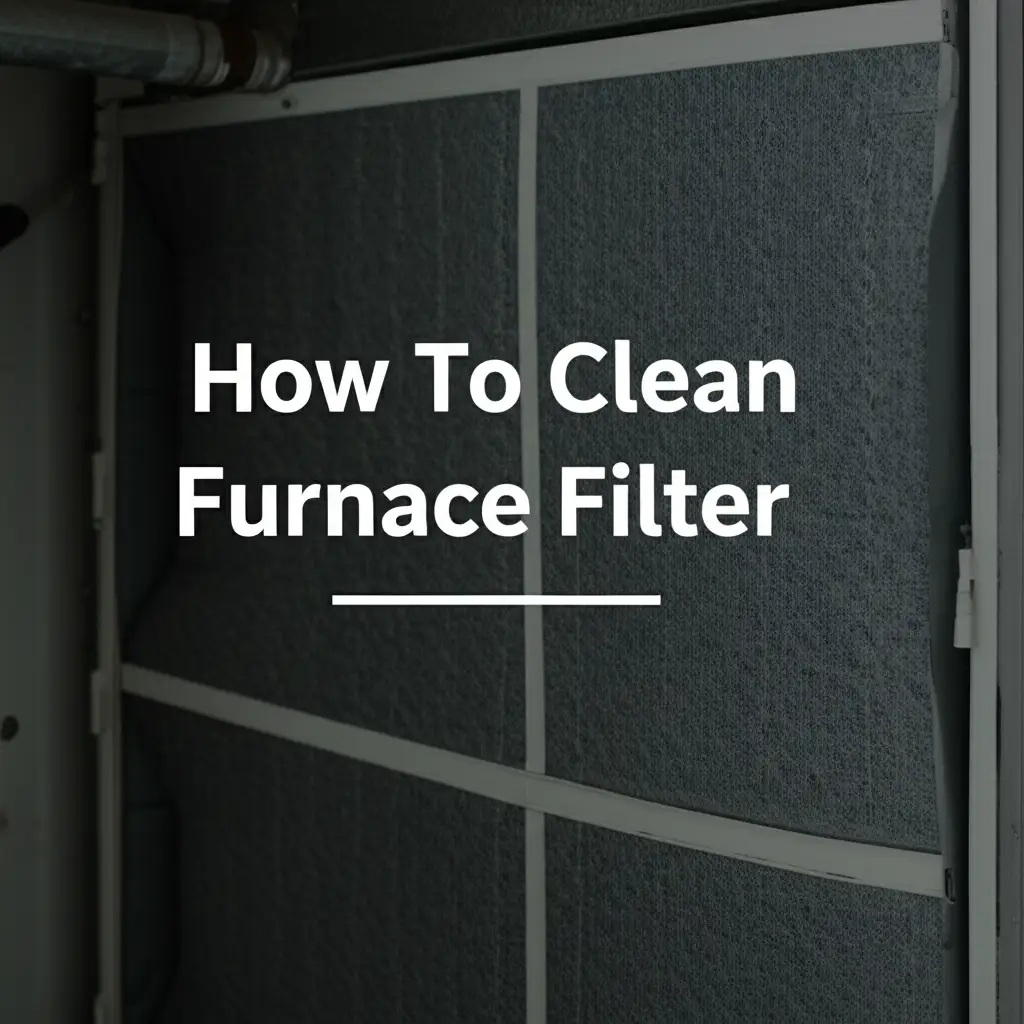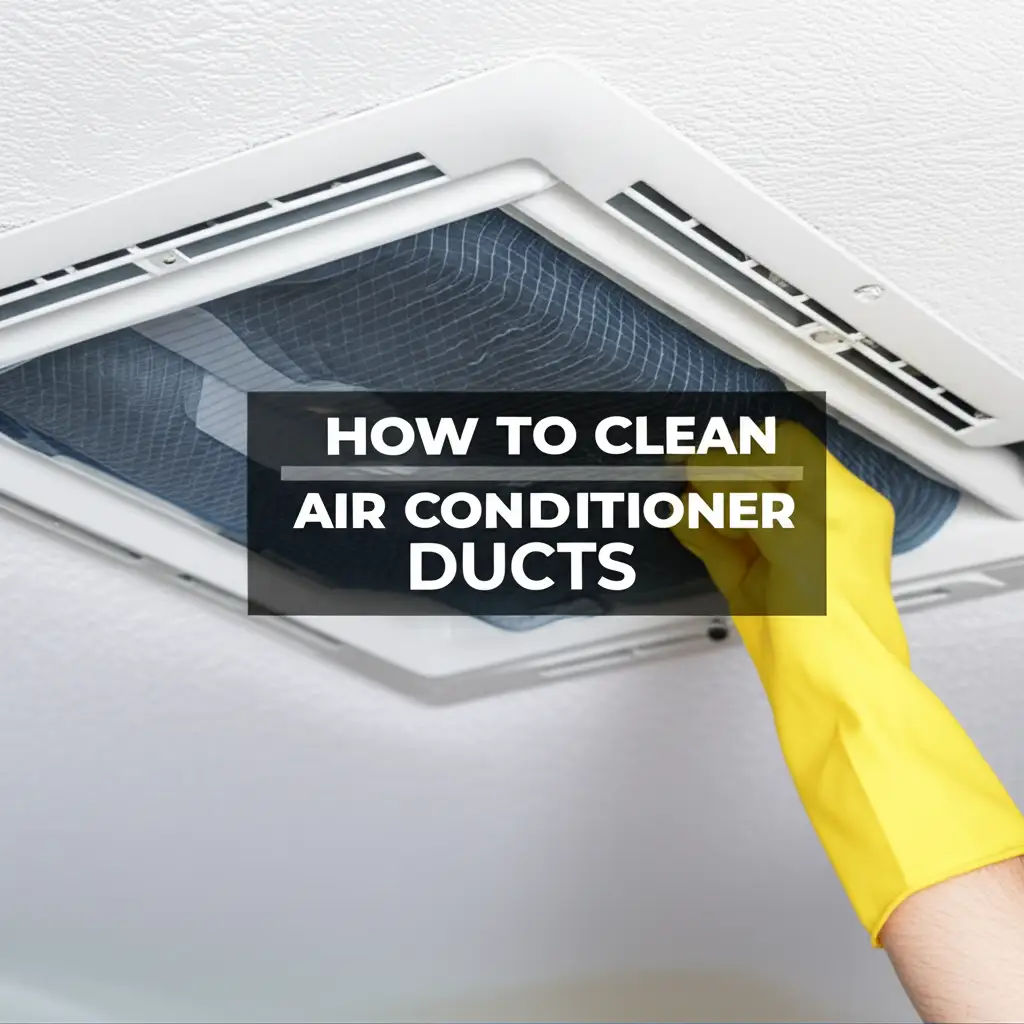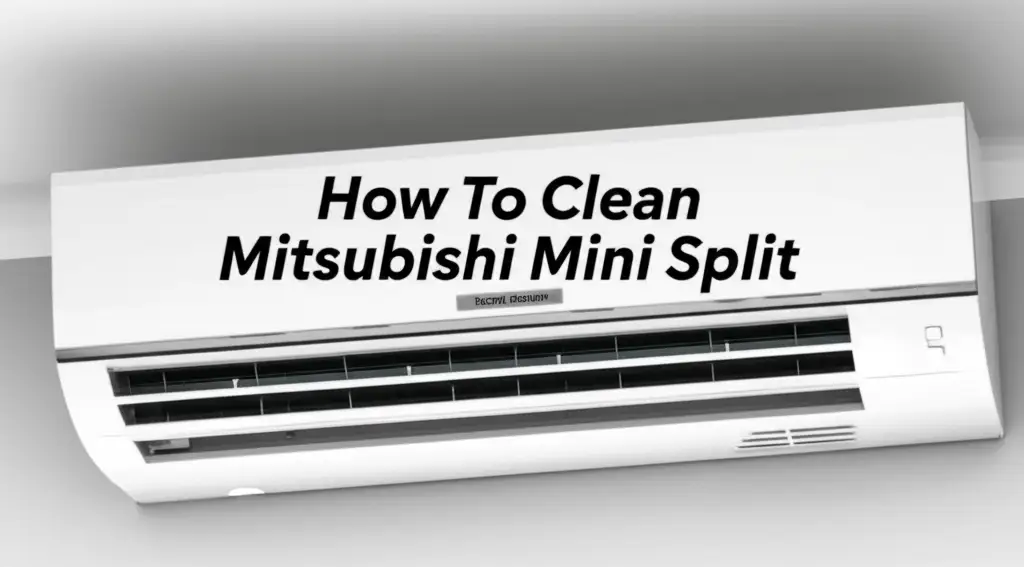· Home Maintenance · 17 min read
How To Clean Furnace Filter

Clean Furnace Filter: Your Guide to Better Home Air
I often think about the unseen elements affecting our homes. One crucial part of a healthy indoor environment is your furnace. A clean furnace filter is central to its good operation. Dirty filters cause poor air quality and higher energy bills. You can maintain a comfortable, healthy home by keeping this component clean.
This guide helps you understand how to clean furnace filter types. We will cover the benefits of regular cleaning. You will learn about safety precautions. We will give you a clear, step-by-step cleaning process. I will also share tips for common issues. Let’s make your home’s air cleaner and your furnace more efficient.
Takeaway
- Identify Filter Type: Determine if your filter is reusable or disposable.
- Prioritize Safety: Always turn off your furnace power before cleaning.
- Gather Tools: Collect necessary items like a vacuum, brush, and cleaning solution.
- Clean Regularly: Follow a consistent cleaning schedule based on filter type and usage.
- Improve Air Quality: A clean filter means healthier air for your household.
How do I clean my furnace filter?
To clean a furnace filter, first turn off your furnace power at the thermostat and breaker. Remove the filter. If it is a reusable type, vacuum loose debris. Then, wash it with mild detergent and water. Rinse thoroughly. Let it dry completely before reinstalling it. Replace disposable filters.
Understanding Your Furnace Filter: Types and Importance
Your furnace filter is a key part of your home’s heating system. It protects the furnace fan from dirt. It also cleans the air circulating through your home. The type of filter you have affects how you maintain it. We generally categorize furnace filters into two main types: disposable and reusable.
Disposable filters are common. People use them once and then throw them away. They are made from fiberglass or pleated paper. Their efficiency varies. You cannot clean these filters. Instead, you must replace them regularly. Check your furnace manual for the correct size and MERV rating.
Reusable filters, on the other hand, are designed for cleaning. These filters often have an aluminum frame. They contain a mesh material, like a synthetic fiber. You can wash these filters. This makes them a more environmentally friendly option. Reusable filters save money over time because you do not buy new ones often. Understanding your filter type is the first step in proper furnace maintenance.
It is important to know your filter’s MERV rating. MERV stands for Minimum Efficiency Reporting Value. This rating shows how well a filter stops airborne particles. Higher MERV ratings mean better filtration. However, a filter with a very high MERV rating can restrict airflow. This makes your furnace work harder. Always check your furnace manufacturer’s recommendations for the maximum MERV rating.
Proper filter maintenance helps your furnace run well. A dirty filter blocks airflow. This makes your furnace use more energy. It can also cause the furnace to overheat. Knowing your filter type helps you keep it clean and your home comfortable. This practice contributes to the overall health of your HVAC system.
Benefits of Cleaning Your Furnace Filter Regularly
Regularly cleaning your furnace filter offers many benefits. These advantages affect your home’s air quality and your energy bills. Neglecting the filter can lead to bigger problems. I make sure to clean my filter on schedule. This simple task brings significant returns.
First, a clean filter greatly improves your indoor air quality. Furnace filters trap dust, pollen, pet dander, and other airborne particles. A dirty filter cannot capture these pollutants effectively. This means more allergens circulate in your home. This can trigger allergies and respiratory issues. Keeping your filter clean helps your family breathe easier. It creates a healthier living environment.
Second, regular cleaning enhances your furnace’s efficiency. A dirty filter restricts airflow. This forces your furnace to work harder to push air through. The motor strains, using more electricity or gas. This increases your energy consumption. A clean filter allows for proper airflow. This lets your furnace run efficiently. You will see lower utility bills. This is a direct saving for your household budget.
Third, consistent filter maintenance extends the lifespan of your furnace. The extra strain caused by a dirty filter can lead to premature wear and tear on components. For example, the furnace motor can overheat. This leads to costly repairs or even a full system replacement. A clean filter reduces stress on the system. It helps prevent breakdowns. This protects your investment in your heating system.
Finally, a clean filter helps maintain consistent heating throughout your home. When airflow is restricted, some areas may not receive enough warm air. This creates uneven temperatures. You might feel cold spots. A clean filter ensures an even distribution of heated air. This keeps your entire home comfortably warm. Just like maintaining your furnace, cleaning your air conditioner filter also contributes to year-round home comfort. Both filters play a key role in maintaining optimal indoor temperatures.
Safety First: Preparing to Clean Your Furnace Filter
Before you begin cleaning your furnace filter, safety is very important. Working with any appliance requires caution. Furnaces involve electricity and gas lines. You must take proper steps to prevent accidents. I always prioritize safety. This keeps me and my home safe during maintenance tasks.
First, turn off the power to your furnace. This is the most crucial step. You can do this at two places. Go to your thermostat and switch the system to “off.” Then, go to your home’s main electrical breaker panel. Find the breaker that controls your furnace. It might be labeled “furnace,” “HVAC,” or “heater.” Flip this breaker to the “off” position. This ensures no power reaches the unit while you work. This prevents accidental startups or electrical shocks.
Next, locate your furnace filter. Most furnaces have a slot for the filter near the return air duct. It is usually located where the cold air enters the furnace unit. Some are in the blower compartment. The filter often slides in and out easily. Pay attention to the airflow arrows on the filter frame. These arrows show the direction air should flow through the filter. You will need to reinsert the clean filter in the same direction.
Gather all your necessary tools before you start. For reusable filters, you will need a soft brush or a vacuum cleaner with a brush attachment. You will also need a mild detergent or dish soap. Prepare a large sink, tub, or even an outdoor area with a hose. Clean rags or old towels are useful for drying. Having everything ready saves time and ensures a smooth process.
Consider wearing protective gear. Dust and debris can fly around. A dust mask can prevent you from inhaling particles. Gloves can keep your hands clean. Safety glasses protect your eyes from any unexpected debris. Taking these precautions makes the cleaning process safer and more comfortable. Remember, proper preparation is key to a successful and safe cleaning experience.
Step-by-Step Guide: How to Clean Reusable Furnace Filters
Cleaning a reusable furnace filter is a straightforward process. Follow these steps carefully. This ensures a thorough clean and avoids damaging the filter. I find this task simple once you get the hang of it. It saves money and is good for the environment.
1. Remove the Filter: Once you have turned off the power to your furnace, locate the filter slot. Gently slide the filter out of the furnace unit. Note the direction of the airflow arrow. This arrow indicates how the air should move through the filter into the furnace. You will reinsert it facing the same way. Be careful as the filter may be very dirty.
2. Remove Loose Debris: Take the filter outdoors or over a large trash can. Gently tap it against a hard surface to dislodge large pieces of dust and debris. You can also use a vacuum cleaner with a brush attachment to remove loose dirt from both sides. This initial step makes the wet cleaning process more effective. Think of it like pre-rinsing dishes before washing them.
3. Prepare for Washing: Find a suitable washing area. A laundry tub, large sink, or even an outdoor area with a hose works well. Fill your basin with lukewarm water. Add a small amount of mild dish soap or a specialized filter cleaning solution. Avoid harsh chemicals, as these can damage the filter material. I prefer a gentle approach to protect the filter’s integrity. Just like maintaining a furnace’s drain line, cleaning your furnace condensate drain line also needs gentle, consistent care to prevent clogs and damage.
4. Wash the Filter: Submerge the filter in the soapy water. Gently swish it around to loosen dirt. Use a soft brush, like a scrub brush or an old toothbrush, to clean the filter’s mesh. Brush in the direction of the pleats if your filter has them. Work from the dirty side to the clean side. This pushes the debris out. If the water becomes very dirty, drain it and refill with fresh soapy water. Ensure you clean both sides thoroughly.
5. Rinse Thoroughly: After scrubbing, rinse the filter under running water. Use a hose or faucet. Make sure all soap residue is gone. Continue rinsing until the water runs clear. Soap left on the filter can affect its performance or even attract more dirt. Just as thorough rinsing is key for a furnace filter, a good rinse is also vital when you clean a foam air filter to remove all cleaning agents.
6. Dry Completely: This step is critical. Shake off excess water. Stand the filter upright or lay it flat on a clean towel in a well-ventilated area. Allow it to air dry completely. Do not put a wet or damp filter back into your furnace. Moisture can promote mold growth. It can also damage your furnace. Drying can take several hours, or even a full day. I usually clean my filter in the morning. This gives it plenty of time to dry before evening. Place it in sunlight if possible, as UV light helps kill any remaining bacteria.
7. Reinstall the Filter: Once the filter is bone dry, carefully slide it back into the furnace. Ensure the airflow arrow points in the correct direction. This is usually towards the furnace blower motor. Double-check that the filter is fully seated in its slot. Then, restore power to your furnace at the breaker panel and thermostat. Your furnace is now ready to run with a clean filter.
What About Disposable Furnace Filters?
Disposable furnace filters are designed for single use. You cannot clean them effectively. Attempting to wash a disposable filter will damage its structure. This makes it useless for air filtration. It can also release trapped particles into your home. You must replace these filters when they get dirty. I understand the temptation to extend their life. However, it is not worth the risk to your furnace or your air quality.
These filters are usually made of fiberglass or pleated paper. The fiberglass filters are the cheapest type. They offer basic filtration. Pleated paper filters are more efficient. They capture smaller particles. Both types become less effective as they collect dirt. They become clogged. This reduces airflow and makes your furnace work harder. The only solution is a fresh filter.
Knowing when to replace a disposable filter is important. Most manufacturers suggest replacement every 1-3 months. This depends on factors like pet ownership, allergies, and overall home activity. Homes with pets or allergy sufferers need more frequent changes. Check your filter once a month. Hold it up to a light source. If you cannot see light through it, it is time for a new one.
Replacing a disposable filter is very simple. First, turn off the power to your furnace. Locate the filter slot. Slide the old filter out. Note the size printed on the filter frame. Buy a new filter of the same size and MERV rating. Insert the new filter with the airflow arrow pointing towards the furnace. Then, restore power.
Choosing the right MERV rating for a disposable filter is also important. Higher MERV ratings capture more particles. However, they also restrict airflow more. Check your furnace manual for the recommended MERV range. Using a filter with too high a MERV rating can strain your furnace motor. This can lead to costly repairs. Always prioritize your furnace’s health and efficiency. While these are different filtration systems, the principle of proper air passage applies to other devices too; for example, cleaning a HEPA filter also requires careful handling to maintain its delicate structure and ensure proper airflow, just like a furnace filter.
Maintenance Schedule: How Often Should You Clean Your Furnace Filter?
Establishing a regular maintenance schedule for your furnace filter is crucial. The frequency depends on several factors. These include the type of filter, your living environment, and how often you use your furnace. A consistent schedule ensures optimal performance. It also maintains healthy indoor air. I always mark my calendar to remind myself.
For reusable furnace filters, cleaning every 1-3 months is a good general guideline. However, you might need to clean it more often. Consider these points:
- Pets: Homes with furry friends generate more pet dander and hair. This clogs filters faster. Clean your filter monthly if you have pets.
- Allergies or Asthma: If anyone in your household suffers from allergies or asthma, more frequent cleaning is beneficial. Aim for monthly cleaning to keep indoor air as clean as possible.
- High Usage: During peak heating seasons, your furnace runs more. This means more air passes through the filter. Check and clean monthly during these times.
- Construction or Renovation: Nearby construction or home renovations create a lot of dust. You should clean your filter weekly or bi-weekly during these periods.
- Number of Occupants: More people in a home generally mean more dust and skin particles. This can lead to quicker filter clogging.
For disposable furnace filters, replacement frequency is similar to cleaning reusable ones. Replace them every 1-3 months under normal conditions. You should replace them monthly with pets, allergies, or high usage. Some premium disposable filters can last longer. Always check the manufacturer’s recommendations. However, it’s wise to inspect them monthly regardless.
A simple visual inspection is your best tool. Pull out your filter once a month. Hold it up to a light source. If you cannot see light passing through the filter material, it is too dirty. It needs cleaning or replacement. This quick check helps you adjust your schedule as needed.
Remember, consistent maintenance prevents bigger issues. A dirty filter can strain your furnace. This leads to costly repairs. It also reduces heating efficiency. Setting a reminder on your phone or calendar helps. This simple habit keeps your home comfortable. It also keeps your energy bills in check. Just like keeping your furnace running efficiently, ensuring a clean filter in your air purifier filter also plays a vital role in maintaining the overall air quality of your home.
Troubleshooting Common Furnace Filter Issues
Even with regular cleaning, you might encounter issues related to your furnace filter. Knowing how to troubleshoot these problems saves you time and potential repair costs. I have faced some of these myself. Quick solutions can prevent minor annoyances from becoming major headaches.
Issue 1: Reduced Airflow Despite a Clean Filter You have just cleaned or replaced your filter, but air coming from vents feels weak.
- Check for Obstructions: Ensure no furniture or drapes block return air vents. Restricted return air makes your furnace work harder.
- Inspect Ducts: Leaky or blocked ducts can cause airflow issues. Consider having your ductwork professionally inspected.
- Blower Motor: The blower motor might be struggling. A professional HVAC technician can assess this. A clean filter helps, but the problem might lie deeper in the system.
Issue 2: Furnace Is Making Strange Noises A whistling sound often indicates a filter that is too restrictive. This means it is too thick for your furnace.
- Check MERV Rating: Your filter’s MERV rating might be too high for your furnace. Refer to your furnace manual for the recommended MERV range. A filter with too high a MERV rating restricts airflow. This creates a whistling noise. It also strains the blower motor.
- Improper Size: An incorrectly sized filter can also cause noises. Make sure your new filter fits snugly in the slot. Gaps around the filter allow unfiltered air to bypass it. This makes the filter less effective.
Issue 3: Furnace Cycling On and Off Frequently (Short Cycling) This means your furnace turns on and off very quickly. It often signals an issue.
- Overheating: A dirty or restrictive filter can cause the furnace to overheat. The furnace’s safety sensor detects high temperatures. It then shuts down the unit to prevent damage. Once it cools, it restarts, leading to short cycling.
- Clean or Replace Filter: This is often the first thing to check. A clean filter ensures proper airflow. This prevents overheating. If short cycling continues after a filter change, consult a professional.
Issue 4: Dust Accumulation Immediately After Cleaning You cleaned the filter, but dust reappears quickly.
- Air Leaks: Check for gaps around the filter where air might bypass it. Ensure the filter is correctly seated.
- Duct Leaks: Your ductwork might have leaks. Air escaping from ducts means dust is entering your system elsewhere.
- Other Filters: Consider other air filtration systems in your home. For example, if you have a separate Dyson air filter or a central humidifier, these may also need cleaning or maintenance. Ensuring all parts of your home’s air system are clean contributes to overall air quality.
- Indoor Air Quality: Dust sources within your home might be high. Regular dusting, vacuuming, and cleaning of carpets can help.
Addressing these common issues keeps your furnace running smoothly. Regular filter maintenance prevents many of these problems from starting. If a problem persists after troubleshooting, call a qualified HVAC technician. They can diagnose and fix more complex issues.
FAQ Section
Q1: Can I use water to clean all types of furnace filters? No, you cannot use water to clean all types of furnace filters. Disposable furnace filters are made of fiberglass or pleated paper. Water will damage their structure. This makes them ineffective. Only clean reusable furnace filters with water. Always check your filter type before attempting to wash it.
Q2: How often should I check my furnace filter? You should check your furnace filter at least once a month. This applies whether it is disposable or reusable. Hold it up to the light. If you cannot see light through the filter material, it needs cleaning or replacement. High usage or the presence of pets may require more frequent checks.
Q3: What happens if I don’t clean my furnace filter? Not cleaning your furnace filter has several negative effects. It reduces indoor air quality. It forces your furnace to work harder. This increases energy bills. It can also strain the furnace motor and components. This leads to costly repairs or a shortened furnace lifespan.
Q4: Can a dirty furnace filter affect my health? Yes, a dirty furnace filter can affect your health. It allows dust, pollen, pet dander, and other allergens to circulate in your home. This can trigger allergies, asthma attacks, and other respiratory issues. A clean filter removes these pollutants, promoting healthier indoor air.
Q5: What MERV rating should I use for my furnace filter? The ideal MERV rating depends on your furnace. Consult your furnace manufacturer’s manual for the recommended MERV range. Higher MERV ratings capture more particles. However, they can restrict airflow. This makes your furnace work harder. Balance air quality needs with furnace compatibility.
Q6: How long does a reusable furnace filter last? A reusable furnace filter can last for many years, often 5-10 years or even longer. This depends on proper care and regular cleaning. With consistent maintenance, these filters provide a durable and cost-effective air filtration solution. Always inspect for damage or wear over time.
Conclusion
Keeping your furnace filter clean is a simple yet powerful act. It makes your home healthier. It also saves you money. I have seen the benefits firsthand. By understanding your filter type, following safety steps, and cleaning regularly, you contribute to a more comfortable living space. This guide showed you how to clean furnace filter effectively. It is a vital task for any homeowner.
Regular maintenance improves air quality. It lowers energy bills. It extends the life of your furnace. Make filter cleaning a routine part of your home care. It will pay dividends in comfort and savings. Take control of your home’s air. Ensure your furnace runs efficiently. Your household will breathe easier. Start cleaning your furnace filter today for a healthier, happier home.
- HVAC maintenance
- furnace care
- air quality
- filter cleaning
- home efficiency
- DIY cleaning




